Advertisements
Advertisements
प्रश्न
Find the odd one out and give its explanation.
पर्याय
Simple microscope
Compound microscope
Telescope
Prism
उत्तर
Prism
Explanation-
Prism disperses light while other optical instruments produce magnified images of objects.
APPEARS IN
संबंधित प्रश्न
An object of height 2.5 cm is placed at a distance of 15 cm from the optical centre 'O' of a convex lens of focal length 10 cm. Draw a ray diagram to find the position and size of the image formed. Mark optical 'O', principal focus F and height of the image on the diagram.
(a) Draw a ray diagram to show the formation of an image by a convex lens when an object is placed in front of the lens between its optical centre and principal focus.
(b) In the above ray diagram, mark the object distance (u) and the image distance (v) with their proper signs (+ve or –ve as per the new Cartesian sign convention) and state how these distances are related to the focal length (f) of the convex lens in this case.
(c) Find the power of a convex lens which forms a real and inverted image of magnification –1 of an object placed at a distance of 20 cm from its optical centre.
To determine the approximate focal length of the given convex lens by focussing a distant object (say, a sign board), you try to focus the image of the object on a screen. The image you obtain on the screen is always
(a) erect and laterally inverted
(b) erect and diminished
(c) inverted and diminished
(d) virtual, inverted and diminished
To find the image-distance for varying object-distances in case of a convex lens, a student obtains on a screen a sharp image of a bright object placed very far from the lens. After that he gradually moves the object towards the lens and each time focuses its image of the screen.
(a) In which direction – towards or away from the lens, does he move the screen to focus the object?
(b) What happens to the size of image – does it increase or decrease?
(c) What happen when he moves the object very close to the lens?
Which of the following lenses would you prefer to use while reading small letters found in a dictionary?
If you focus the image of a distant object, whose shape is given below, on a screen using a convex lens, the shape of the image of this object on the screen would be:
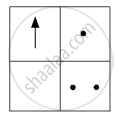
(a)
(b)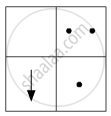
(c)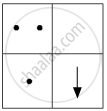
(d)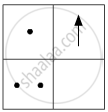
When a ray of light enters from one medium to another having different optical densities it bends. Why does this phenomenon occur?
Write one condition where it does not bend when entering a medium of different optical density.
An object is placed at a distance of 12 cm from a convex lens of focal length 8 cm. Find :
1) the position of the image
2) nature of the image
A beam of light travelling in a rectangular glass slab emerges into air. Draw a ray-diagram indicating the change in its path.
Draw a labelled ray diagram to show the angle of incidence and the angle of refraction for a refracted ray of light.
Where should an object be placed in order to use a convex lens as a magnifying glass?
Where should an object be placed in front of a convex lens so as to obtain its real, inverted and magnified image?
Fill in the following blank with suitable word:
Parallel rays of light are refracted by a convex lens to a point called the ........
Fill in the following blank with suitable word:
The image in a convex lens depends upon the distance of the ........... from the lens.
With the help of a labelled diagram explain how a convex lens converges a beam of parallel light rays. Mark the principal axis, optical centre, principal focus and focal length of the convex lens on the diagram.
Calculate the focal length of a convex lens which produces a virtual image at a distance of 50 cm of an object placed 20 cm in front of it.
A convex lens of focal length 0.10 m is used to form a magnified image of an object of height 5 mm placed at a distance of 0.08 m from the lens. Calculate the position, nature and size of the image.
A student did an experiment with a convex lens. He put an object at different distances 25 cm, 30 cm, 40 cm, 60 cm and 120 cm from the lens. In each case he measured the distance of the image from the lens. His results were 100 cm, 24 cm, 60 cm, 30 cm and 40 cm, respectively. Unfortunately his results are written in wrong order.
What is the focal length of this lens?
Which type of lenses are:
thicker in the middle than at the edges?
An object is placed 20 cm from (a) a converging lens, and (b) a diverging lens, of focal length 15 cm. Calculate the image position and magnification in each case.
What would be the diameter of the image of the flower on the film?
An image formed on a screen is three times the size of the object. The object and screen are 80 cm apart when the image is sharply focussed.
State which type of lens is used.
What kind of lens is used to correct
long-sightedness?
A student places a 8.0 cm tall object perpendicular to the principal axis of a convex lens of focal length 20 cm. The distance of the object from the lens is 30 cm. He obtains a sharp image of the object on a screen placed on the other side of the lens. What will be the nature (inverted, erect, magnified, diminished) of the image he obtains on a screen? Draw ray diagram to justify your answer.
Where should an object be placed in front of a convex lens to get a real image of the size of the object?
Where must a point source of light be placed in front of a convex lens so as to obtain a parallel beam of light?
Answer the following question.
List four precautions which a student should observe while determining the focal length of a given convex lens by obtaining an image of a distant object on a screen.
Out of the two lenses one concave and the other convex state which is a convergent or a divergent type of a lens. Give a reason for your answer.
State the position of object, position of image, nature of image when: Convex lens is used as objective lens of photographic camera.
For a specific glass lens f = 0.5 m. This is the only information given to the student. Which type of lens is given to him and what is its power?
Object at 2F1 of a convex lens : Image at 2F2 : : Object at F1 : _______
 : Object near the lens : : ______ :
: Object near the lens : : ______ : 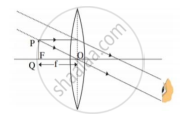
Write scientific reason.
Adults need bifocal lens spectacle.
Observe the given figure and answer the following questions.

- Where is the above type of lens construction used?
- What type of image is formed by an objective lens?
- What happens instead of placing at Fo if the object is placed in between O and Fo?
